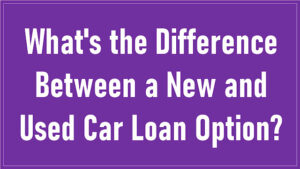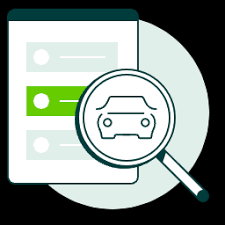
Introduction.
In this article, I’ll shed light on a common dilemma faced by prospective car buyers: the choice between new and used car loan options. When embarking on the journey to purchase a vehicle, one of the critical decisions you’ll make is whether to opt for a new or a used car. Each choice comes with its unique advantages and considerations, extending beyond the obvious contrast in the vehicle’s age. As such, understanding the key distinctions between new and used car loans is vital to making an informed decision that aligns with your financial circumstances and automotive preferences.
To delve deeper into this financial crossroads, we’ll explore the factors that differentiate new and used car loans, from interest rates and loan terms to depreciation rates and the overall cost of ownership. By the end of this article, you’ll be better equipped to navigate the complex terrain of car financing and make a choice that suits your budget and long-term objectives. So, whether you’re seeking the thrill of a brand-new vehicle or the economical appeal of a used one, let’s dissect the intricacies of these loan options to help you drive away with confidence.
- Interest rates and loan terms: New vs. used cars.
- Depreciation impact on loan terms and borrowing costs.
- Eligibility requirements and credit score considerations.
- Down payment and financing options for new and used cars.
- Warranty coverage and maintenance costs for each option.
- Resale value and long-term financial implications of your choice.
Interest rates and loan terms: New vs. used cars.
When considering a new car loan versus a used car loan, one of the primary factors to compare is the difference in interest rates and loan terms. New car loans typically come with lower interest rates because new cars have higher value and lower risk for lenders.
This means you may pay less in interest over the life of the loan. Additionally, new car loans often have longer loan terms, such as 60 or 72 months, which can result in lower monthly payments but potentially higher overall costs due to the extended term.
On the other hand, used car loans tend to have slightly higher interest rates because used cars depreciate faster and have a higher risk of mechanical issues. Loan terms for used cars are often shorter, typically ranging from 36 to 60 months. This may result in higher monthly payments but can also help you pay off the loan faster and potentially pay less interest in total. Therefore, you should carefully weigh the trade-off between lower interest rates with new cars and the shorter loan terms with used cars to find the most suitable option for your financial situation and budget.
Depreciation impact on loan terms and borrowing costs.
Depreciation is a crucial factor in the difference between new and used car loans. New cars experience rapid depreciation in their first few years, losing significant value as soon as they’re driven off the lot. This depreciation can affect both loan terms and borrowing costs.
For new cars, the rapid depreciation means that you may owe more on your loan than the car is worth for the first few years. This can be problematic if you want to sell or trade in the car before the loan is paid off. In contrast, used cars have already undergone a significant portion of their depreciation, so you’re less likely to be “upside down” on the loan, where you owe more than the car’s value. This makes used car loans generally less risky in this regard.
Additionally, since used cars have already depreciated, they often come with lower sticker prices, which can lead to smaller loan amounts and potentially lower borrowing costs overall. It’s essential to consider how depreciation affects your loan and the total cost of ownership when deciding between a new and used car loan.
Eligibility requirements and credit score considerations.
Eligibility requirements and credit score considerations can differ between new and used car loans. Lenders often have stricter criteria for new car loans compared to used car loans. When applying for a new car loan, lenders may require a higher credit score, a lower debt-to-income ratio, and a more stable financial history. This is because new car loans typically involve larger loan amounts, and lenders want to minimize their risk.
On the other hand, used car loans may be more accessible to individuals with a wider range of credit scores and financial backgrounds. Lenders might be more lenient in their approval criteria for used car loans since the loan amounts are usually smaller, and used cars are considered more affordable.
It’s crucial to assess your credit score and financial situation to determine which type of loan you’re eligible for and what interest rates you can secure. Improving your credit score and financial stability can enhance your eligibility for better loan terms and lower interest rates, regardless of whether you choose a new or used car loan.
Down payment and financing options for new and used cars.
The down payment requirement and available financing options vary for new and used car loans. New car loans typically require a larger down payment compared to used car loans. Lenders often ask for a down payment of around 20% of the car’s purchase price to secure a new car loan. This can be a substantial upfront expense.
In contrast, used car loans may offer more flexibility in terms of down payment. Some lenders might require a smaller down payment, making it easier for buyers to get into a used car with less money upfront. However, keep in mind that making a larger down payment can reduce your monthly payments and save you money on interest in the long run.
The financing options also differ. New car loans might have more competitive interest rates, but used car loans provide the advantage of lower principal amounts. Consider your financial situation and budget to decide the down payment and financing option that best suits your needs.
Warranty coverage and maintenance costs for each option.
Warranty coverage and maintenance costs are significant factors to consider when choosing between a new and used car loan. New cars typically come with comprehensive manufacturer warranties, which can cover repairs and maintenance for the first few years. This can provide peace of mind and save you money on unexpected repair costs during the early ownership period.
On the other hand, used cars often have expired or limited warranties, depending on their age and mileage. This means you may need to budget for maintenance and repairs more actively, which can increase the total cost of ownership. However, it’s important to note that used cars can still be reliable and cost-effective if well-maintained, and you can opt for extended warranties or certified pre-owned programs to mitigate some of the risks associated with older vehicles.
Carefully assess your preferences and budget when it comes to warranty coverage and potential maintenance costs. Consider how these factors align with your long-term financial goals.
Resale value and long-term financial implications of your choice.
The decision between a new and used car loan can significantly impact the resale value and long-term financial implications of your vehicle choice. New cars experience rapid depreciation in the first few years, which can result in a substantial loss in resale value. This means that if you plan to sell or trade in your new car relatively soon, you may not recoup as much of your initial investment.
Used cars, however, have already undergone a significant portion of their depreciation, so they tend to retain their value better over time. This can be advantageous if you plan to keep the car for an extended period or are concerned about long-term financial implications.
Ultimately, your choice between a new and used car loan should align with your intended ownership period and financial goals. Consider whether you prioritize the immediate benefits of a new car or the potential long-term savings associated with a used car.
Conclusion.
I hope this exploration of the differences between new and used car loans has provided you with valuable insights to make an informed decision when purchasing your next vehicle. It’s clear that new car loans offer the allure of a pristine, latest model, but they often come with higher costs and faster depreciation. On the other hand, used car loans offer financial savings, with lower initial costs and reduced depreciation, making them a practical choice for budget-conscious buyers.
In conclusion, your choice between a new and used car loan ultimately depends on your financial situation, preferences, and priorities. Whether you prioritize the thrill of a brand-new vehicle or seek the practicality of a used one, understanding these distinctions empowers you to navigate the car-buying process wisely, ensuring that your investment aligns with your unique needs and goals.
